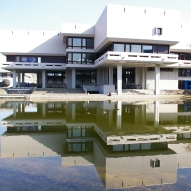 ; Mohr, Peter ; Grimmelmann, Imke ; Gutzmer, Ralf ; Meier, Friedegund
; Mohr, Peter ; Grimmelmann, Imke ; Gutzmer, Ralf ; Meier, Friedegund  ; Pföhler, Claudia ; Sachse, Michael Max ; Meiss, Frank ; Forschner, Andrea ; Haferkamp, Sebastian ; Welzel, Julia ; Terheyden, Patrick ; Herbst, Rudolf ; Utikal, Jochen ; Kaatz, Martin ; Weishaupt, Carsten ; Kreuter, Alexander ; Debus, Dirk ; Duecker, Pia ; Sindrilaru, Anca ; Löffler, Harald ; Schley, Gaston ; Weichenthal, Michael ; Schadendorf, Dirk ; Ugurel, Selma ; Gesierich, Anja ; Schilling, Bastian
; Pföhler, Claudia ; Sachse, Michael Max ; Meiss, Frank ; Forschner, Andrea ; Haferkamp, Sebastian ; Welzel, Julia ; Terheyden, Patrick ; Herbst, Rudolf ; Utikal, Jochen ; Kaatz, Martin ; Weishaupt, Carsten ; Kreuter, Alexander ; Debus, Dirk ; Duecker, Pia ; Sindrilaru, Anca ; Löffler, Harald ; Schley, Gaston ; Weichenthal, Michael ; Schadendorf, Dirk ; Ugurel, Selma ; Gesierich, Anja ; Schilling, Bastian | Dokumentenart: | Artikel | ||||
|---|---|---|---|---|---|
| Titel eines Journals oder einer Zeitschrift: | European Journal of Cancer | ||||
| Verlag: | ELSEVIER SCI LTD | ||||
| Ort der Veröffentlichung: | OXFORD | ||||
| Band: | 167 | ||||
| Seitenbereich: | S. 32-41 | ||||
| Datum: | 2022 | ||||
| Institutionen: | Medizin > Lehrstuhl für Dermatologie und Venerologie | ||||
| Identifikationsnummer: |
| ||||
| Stichwörter / Keywords: | DABRAFENIB PLUS TRAMETINIB; SURVIVAL; EFFICACY; Melanoma; PD-1 resistance; MAPK; Second-line treatment; Third-line treatment | ||||
| Dewey-Dezimal-Klassifikation: | 600 Technik, Medizin, angewandte Wissenschaften > 610 Medizin | ||||
| Status: | Veröffentlicht | ||||
| Begutachtet: | Ja, diese Version wurde begutachtet | ||||
| An der Universität Regensburg entstanden: | Ja | ||||
| Dokumenten-ID: | 57746 |
 Web of Science
Web of ScienceZusammenfassung
Objectives: Forty to sixty percent of patients with advanced melanoma show primary resistance to PD-1-based immunotherapy, 30-40% of initial responders also progress. Here, we evaluated the outcome of second-line targeted therapy (TT) after progression on PD-1-based immune checkpoint inhibition (ICI) in BRAFV600-mutated melanoma. In addition, we report data on the activity of re-exposure with ...

Zusammenfassung
Objectives: Forty to sixty percent of patients with advanced melanoma show primary resistance to PD-1-based immunotherapy, 30-40% of initial responders also progress. Here, we evaluated the outcome of second-line targeted therapy (TT) after progression on PD-1-based immune checkpoint inhibition (ICI) in BRAFV600-mutated melanoma. In addition, we report data on the activity of re-exposure with PD-1-based regimes. Methods: Patients with advanced (non- resectable stage III or IV, AJCC 2017, 8th edition) melanoma progressing on PD-1-based ICI (nivolumab, pembrolizumab or ipilimumab plus nivolumab) and receiving second-line BRAF plus MEK inhibition were identified from the prospective multicenter skin cancer registry ADOREG. Results: We identified 108 patients with unresectable stage III or stage IV melanoma progressing on first-line ICI (nivolumab, pembrolizumab or ipilimumab plus nivolumab) and receiving second-line combined BRAF/MEK inhibition. Seventy- three percent of the cohort presented with primary PD-1 resistant disease. Median progression-free survival ( PFS) on ICI was 2.6 (95% CI 2.2-2.9) months. Median PFS on subsequent TT was 6.6 (95% CI 5.4 -7.8) months. Median OS from start of second-line TT was 16.0 (95% CI 11.2-20.8) months. The 3-year PFS and OS rates on second-line TT were 16% and 30%. The objective response rate (ORR) and disease control rate (DCR) to TT were 42.6% and 55.6%. In patients with brain metastases, the ORR and DCR were 31.4% and 43.1%. Patients without brain metastases showed an ORR and DCR of 52.6% and 66.7%, respectively. Response to first-line ICI was associated with a numerically higher ORR and DCR to second-line TT and improved OS on TT. Twenty-three patients received third-line ICI of whom two patients showed an objective response. Conclusions: BRAF plus MEK inhibition shows meaningful activity and outcome in patients with advanced melanoma resistant to anti-PD-1- based immunotherapy. Rates of long- term benefit and survival in our study were similar to those reported for treatment-nai<spacing diaeresis>ve patients receiving first-line MAPKi.
Metadaten zuletzt geändert: 29 Feb 2024 13:02



 Altmetric
Altmetric